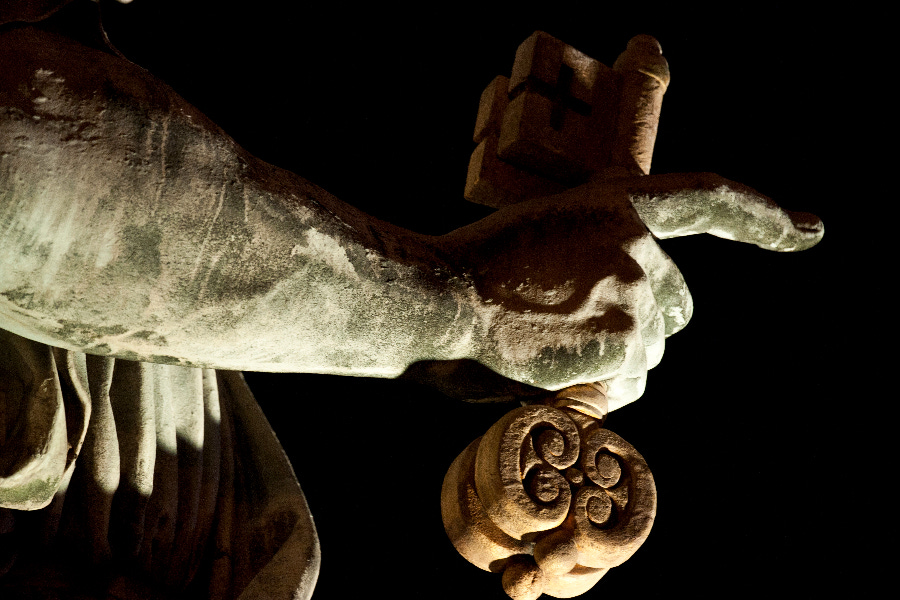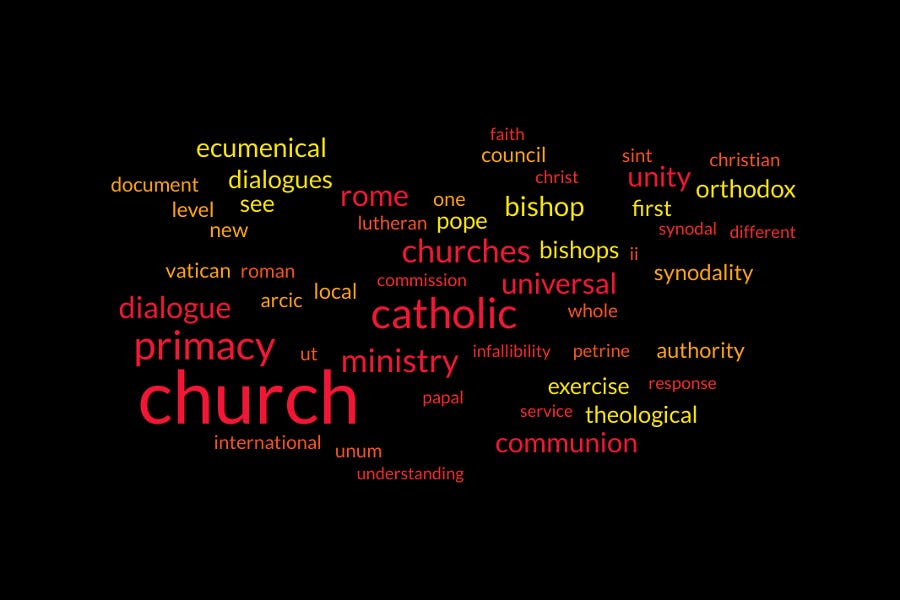World
‘The Bishop of Rome’: A brief guide for busy readers

In his 1995 encyclical Ut unum sint, Pope John Paul II made what many at the time considered a startling proposal.
He invited other Christians around the world to join him in exploring ways in which the Bishop of Rome could exercise a renewed “ministry of unity.”
Almost 30 years later, the Vatican is taking stock of the responses, in a new document entitled “The Bishop of Rome: Primacy and synodality in ecumenical dialogues and responses to the encyclical Ut unum sint.”
The 146-page document was released June 13, accompanied by a press conference featuring the Vatican’s ecumenism chief Cardinal Kurt Koch and synod czar Cardinal Mario Grech.
What exactly is this new text? What does it say? And what will happen next?
Here’s a brief guide for busy readers.
What’s a ‘study document’?
The first thing to note is that “The Bishop of Rome” is a long document, clocking in at around 43,000 words, meaning it takes somewhere between three to six hours to read.
What type of Vatican text is it? It’s not one of the more familiar kinds — encyclicals, instructions, apostolic letters — but rather a “study document” issued by the Vatican’s Dicastery for Promoting Christian Unity.
In a preface, Cardinal Koch, the dicastery’s prefect, says this means that the text “does not claim to exhaust the subject nor to summarize the Catholic magisterium on it.”
Rather, “its purpose is to offer an objective synthesis of recent ecumenical developments on the theme, thus reflecting the insights but also the limitations of the dialogue documents themselves.”
So this isn’t a text offering authoritative guidance to Catholics on the meaning of primacy and synodality. Instead, it’s exploring the current debate around those terms in the wider Christian world.
It’s not a papal text, though it has been published “with the agreement” of Pope Francis. Rather, it represents the Christian unity dicastery’s view of current discussions.
The document is not meant to settle the debate on papal primacy, but rather to inform it — and perhaps also to guide it in the years to come.
There’s a notable section at the end, “Towards an Exercise of Primacy in the 21st century,” which summarizes what Cardinal Koch calls “the most significant suggestions” for the renewed exercise of the Bishop of Rome’s ministry of unity.
If you’re pressed for time, you might want to skip to that section (beginning on page 116). It’s about 6,000 words, or 20 minutes of reading.

What’s the background?
The document’s background arguably stretches back to biblical times, specifically to the moment that Jesus entrusted Peter with the keys to the kingdom of heaven as recorded in Matthew 16:19.
As the Vatican Council II’s decree on ecumenism noted, in the centuries that followed, Christians in the East and West “each followed their separate ways though linked in a brotherly union of faith and sacramental life.” When there were disagreements over matters of faith or discipline, “the Roman See by common consent acted as guide.”
But after a millennium of this somewhat loose form of unity, Eastern and Western Christians went their separate ways. Five centuries or so later, Western Christianity fragmented at the Reformation.
But the conviction that the Bishop of Rome exercised a ministry of unity on behalf of all Christians persisted despite every painful division.
The First Vatican Council, which began in 1868, offered precise definitions of the pope’s primacy of jurisdiction and papal infallibility that seemed to gain little favor outside of the Catholic Church.
The new document argues that “the understanding and exercise of the ministry of the Bishop of Rome entered a new phase” with Vatican II, which stressed episcopal collegiality alongside papal primacy.
After roughly 30 years of theological dialogue between Catholics and other Christians, John Paul II expressed his hope, in Ut unum sint, that “we may seek—together, of course—the forms in which this ministry may accomplish a service of love recognized by all concerned.”
The new document aims to present the following in an orderly way:
1) The responses to John Paul II’s Ut unum sint, as well as the documents of theological dialogues devoted to the question of primacy.
2) “The main theological questions traditionally challenging papal primacy, and some significant advances in contemporary ecumenical reflection.”
3) “Some perspectives for a ministry of unity in a reunited Church.”
4) “Practical suggestions or requests addressed to the Catholic Church.”
These items form the document’s four main sections.
What does it say?
Helpfully, the text has a section summarizing the four sections (beginning on p106).
1) Regarding responses to Ut unum sint, the document says that the question of papal primacy is being discussed in “a new and positive ecumenical spirit.”
“This new climate is indicative of the good relations established between Christian communions, and especially between their leaders,” it says.
2) Concerning disputed theological questions, the text welcomes what it calls “a renewed reading” of the classic “Petrine texts,” which set out the Apostle Peter’s role in the Church.
“On the basis of contemporary exegesis and patristic research, new insights and mutual enrichment have been achieved, challenging some traditional confessional interpretations,” it notes.
One particularly controversial issue, it says, is the Catholic conviction that the primacy of the Bishop of Rome was established de iure divino (by divine law), “while most other Christians understand it as being instituted merely de iure humano” (by human law).
But the document says that new interpretations are helping to overcome “this traditional dichotomy, by considering primacy as both de iure divino and de iure humano, that is, being part of God’s will for the Church and mediated through human history.”
Another enduring obstacle is the First Vatican Council. But the document says that here too there has been “promising progress,” thanks to ecumenical dialogues that seek “a ‘rereading’ or ‘re-reception’” of the Council’s decrees.
This approach, it says, “emphasizes the importance of interpreting the dogmatic statements of Vatican I not in isolation, but in the light of their historical context, of their intention and of their reception — especially through the teaching of Vatican II.”
Addressing this point in a June 13 Vatican News interview, Cardinal Koch said that since Vatican I’s “dogmatic definitions were profoundly conditioned by historical circumstances,” ecumenical partners were encouraging the Catholic Church to “seek new expressions and vocabulary faithful to the original intention, integrating them into an ecclesiology of communion and adapting them to the current cultural and ecumenical context.”
“There is therefore talk of a ‘re-reception,’ or even ‘reformulation,’ of the teachings of Vatican I,” the Swiss cardinal explained.
3) Summarizing the document’s third section, the text says that fresh approaches to disputed questions have “opened new perspectives for a ministry of unity in a reconciled Church.”
Crucially, the document suggests there is a common understanding that although the first millennium of Christian history is “decisive,” it “should not be idealized nor simply re-created since the developments of the second millennium cannot be ignored and also because a primacy at the universal level should respond to contemporary challenges.”
From the ecumenical dialogues, it’s possible to deduce “principles for the exercise of primacy in the 21st century,” the text says.
One is that there must be an interplay between primacy and synodality at every level of the Church. In other words, there is a need for “a synodal exercise of primacy.”
Synodality is notoriously difficult to define, but the document describes it at one point as “the renewed practice of the Synod of Bishops, including a broader consultation of the whole People of God.”
4) Among the practical suggestions for a renewed exercise of the ministry of unity, the document highlights the possibility of “a Catholic ‘re-reception’, ‘re-interpretation’, ‘official interpretation’, ‘updated commentary’ or even ‘rewording’ of the teachings of Vatican I.”
It also stresses appeals for “a clearer distinction between the different responsibilities of the Bishop of Rome, especially between his patriarchal ministry in the Church of the West and his primatial ministry of unity in the communion of Churches, both West and East.”
“There is also a need to distinguish the patriarchal and primatial roles of the Bishop of Rome from his political function as head of state,” the text says, adding: “A greater accent on the exercise of the ministry of the pope in his own particular Church, the Diocese of Rome, would highlight the episcopal ministry he shares with his brother bishops, and renew the image of the papacy.”
The new document appears months after Pope Francis restored the title “Patriarch of the West” among the list of papal titles in the Vatican’s annual yearbook, after it was dropped by his predecessor Benedict XVI.
Commenting on that development at the June 13 Vatican press conference, Cardinal Koch said that neither Francis nor Benedict XVI offered detailed explanations for the change.
“But I am convinced they did not want to do something against anyone, but both wanted to do something ecumenically respectful,” he commented.
Another suggestion is for the Catholic Church to further develop its practice of synodality, particularly through “further reflection on the authority of national and regional Catholic bishops’ conferences, their relationship with the Synod of Bishops and with the Roman Curia.”
Finally, the text mentions a request for regular meetings among Church leaders at a worldwide level, in a spirit of “conciliar fellowship.”
What’s next?
The study document ends with the Dicastery for Promoting Christian Unity’s brief proposal for the exercise of primacy in the 21st century, which it approved in 2021.
“Our dicastery would like to share this proposal, together with the study document, with the various Christian communions, asking for their thoughts on the matter,” Koch told Vatican News.
“We thus hope to continue the discussion, ‘together, of course,’ for an exercise of the ministry of unity of the Bishop of Rome ‘recognized by one another.’”
The new document is therefore a small but noteworthy milestone on the very long path to greater Christian unity.







:max_bytes(150000):strip_icc()/roundup-writereditor-loved-deals-tout-f5de51f85de145b2b1eb99cdb7b6cb84.jpg)


